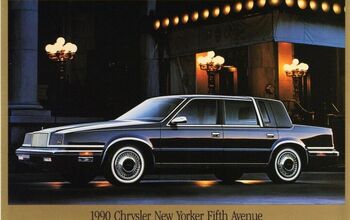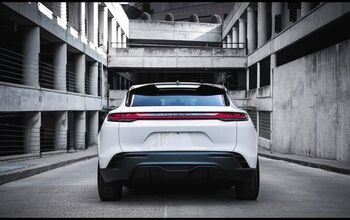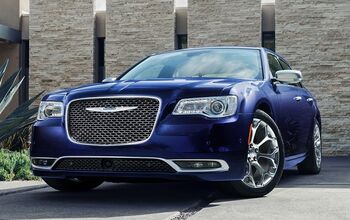Chrysler: The Powertrain Plans
One of Chrysler’s major problems in the powertrain department is a mass of V6 engines of varying ages and displacements. The lack of interchangeability between engines contributes to Chrysler’s unprofitability, and the advanced age of some hurts overall fuel efficiency considerably. The debut of a brand-new Pentastar V6, arriving with next year’s Grand Cherokee, will change all that. The 280 hp, 260 lb-ft engine will replace all of Chrysler’s V6s, and handily gives Fiat their only modern V6. Single and twin-turbo versions are being considered. Meanwhile V8s aren’t going away, with 5.7 and 6.4 liter versions planned.
The World Engines of 1.8, 2.0 and 2.4 liter displacement will continue, also providing Fiat with a lower-cost alternative to its more advanced but more expensive engines. Fiat does plan on introducing its Multiair technology as well as direct injection to the workhorse World Engine family, although no time frame has been given for such a development.
Fiat will provide its Multiair 1.4 liter “Fire” engine, although the only known application is the 500. A turbocharged 1.4 will arrive in 2011 with the 500 Abarth, and potentially thereafter in Fiat-based Dodge and Chrysler B-segment (Yaris/Fit) hatchbacks, planned for 2012. The Fire family is unlikely to be used outside of the B-segment for the simple reason that in non-turbocharged form, the engine produces only 100 hp and 92 lb-ft. Fiat’s JTD diesel engines in 1.6 to 2.0 displacement are mentioned in the presentation, but they seem unlikely candidates for powering Wrangler, the only vehicle confirmed with a diesel option. Dual clutch transmissions will debut with the refreshed Sebring in Q4 2010.
By far the biggest question surrounding Chrysler’s powertrain plans is in regards to electrification and hybrids. Fiat brings little to no expertise to the table in this area, and Chrysler’s ENVI vaporware wasn’t mentioned once in the whole 7 hour presentation. Marchionne dismissed the idea of consumer-market hybrids or EV’s in the short term, calling electrical storage technology “unready.” Only a Fiat Doblo-based commercial EV is on the radar. If Chrysler ever gets past its short-term issues, it hopes to have improved its fleet efficiency by 2014 through proliferation of Fiat’s technology and the use of more four-cylinder engines. If they begin thinking about an IPO though, look for talk of futuretech to come back around again, as investors will want more long-term upside than is currently on offer.
More by Edward Niedermeyer
Latest Car Reviews
Read moreLatest Product Reviews
Read moreRecent Comments
- Tassos Jong-iL Not all martyrs see divinity, but at least you tried.
- ChristianWimmer My girlfriend has a BMW i3S. She has no garage. Her car parks on the street in front of her apartment throughout the year. The closest charging station in her neighborhood is about 1 kilometer away. She has no EV-charging at work.When her charge is low and she’s on the way home, she will visit that closest 1 km away charger (which can charge two cars) , park her car there (if it’s not occupied) and then she has two hours time to charge her car before she is by law required to move. After hooking up her car to the charger, she has to walk that 1 km home and go back in 2 hours. It’s not practical for sure and she does find it annoying.Her daily trip to work is about 8 km. The 225 km range of her BMW i3S will last her for a week or two and that’s fine for her. I would never be able to handle this “stress”. I prefer pulling up to a gas station, spend barely 2 minutes filling up my small 53 liter fuel tank, pay for the gas and then manage almost 720 km range in my 25-35% thermal efficient internal combustion engine vehicle.
- Tassos Jong-iL Here in North Korea we are lucky to have any tires.
- Drnoose Tim, perhaps you should prepare for a conversation like that BEFORE you go on. The reality is, range and charging is everything, and you know that. Better luck next time!
- Buickman burn that oil!


































Comments
Join the conversation
I've been working on this engine's water pump/front engine cover assembly. Production is about to begin on it shortly. For what its worth, Chrysler have been watching over us closely and have very high expectations for quality control. Tolerances are held very tight. Probably good signs for the future. I can't help but wish them well since the Chrysler job kept me employed during the recessions darkest days.
The Phoenix looks very promising, too bad there aren't any decent cars to put it in yet (bar the new Grand Cherokee and, possibly, the new Charger/300) My feeling with the differences between Hyundai and Chrysler 2.4 engines is that they're more to do with how the engines are installed in the car (better mounts, more insulation in the Sonata maybe?) than the engines themselves but I probably don't really know what I'm talking about.